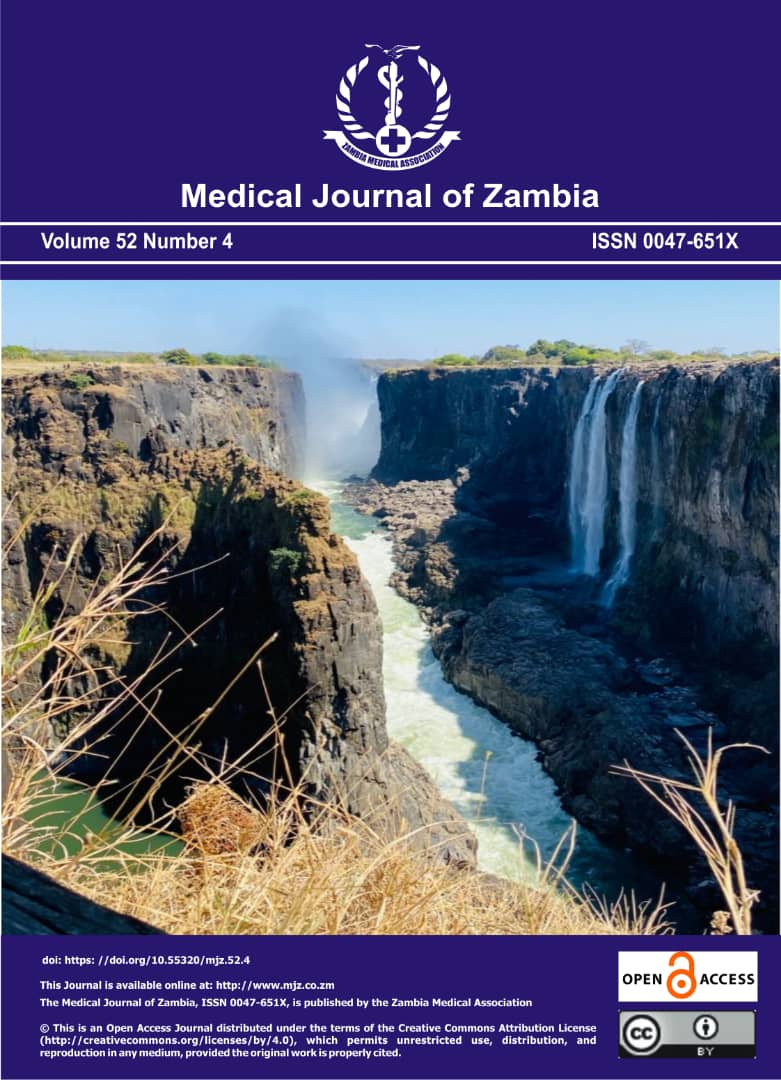Pica and associated factors among pregnant women attending antenatal clinic at Chelstone Level One Hospital and Mtendere clinic, Lusaka District, Zambia
DOI:
https://doi.org/10.55320/mjz.52.4.738Abstract
The present study assessed the prevalence of pica and associated factors among pregnant women at Chelstone Level-one Hospital and Mtendere clinic, in Lusaka district of Zambia. This was a descriptive cross-sectional study in which questionnaires were administered face to face to 372 pregnant women. The data was analyzed using Statistical Package for Social Sciences version 23. Statistical significance was set as p=0.05 at 95% confidence interval. The prevalence of pica was 38.2% (n=142), and of these, soil was the most common non-food item consumed (84.5%; n=120). Reasons stated by participants for practicing pica included cravings, sensory reasons such as the pleasant texture, taste, or smell, for controlling nausea and vomiting and others. There was no significant association between nutrition status, hemoglobin level and pica practice. Education level, culture, history of pica, religious affiliation and pica practice among family or friends were associated with the practice of pica (P = <0.050). The practice of pica is noteworthy among pregnant women as it is practiced by a considerable proportion of pregnant women in this area. There is need for increased awareness on pica practice and its harmful effects among pregnant women.
Downloads
Downloads
Published
Issue
Section
License
Copyright (c) 2025 Medical Journal of Zambia

This work is licensed under a Creative Commons Attribution-NonCommercial 4.0 International License.









